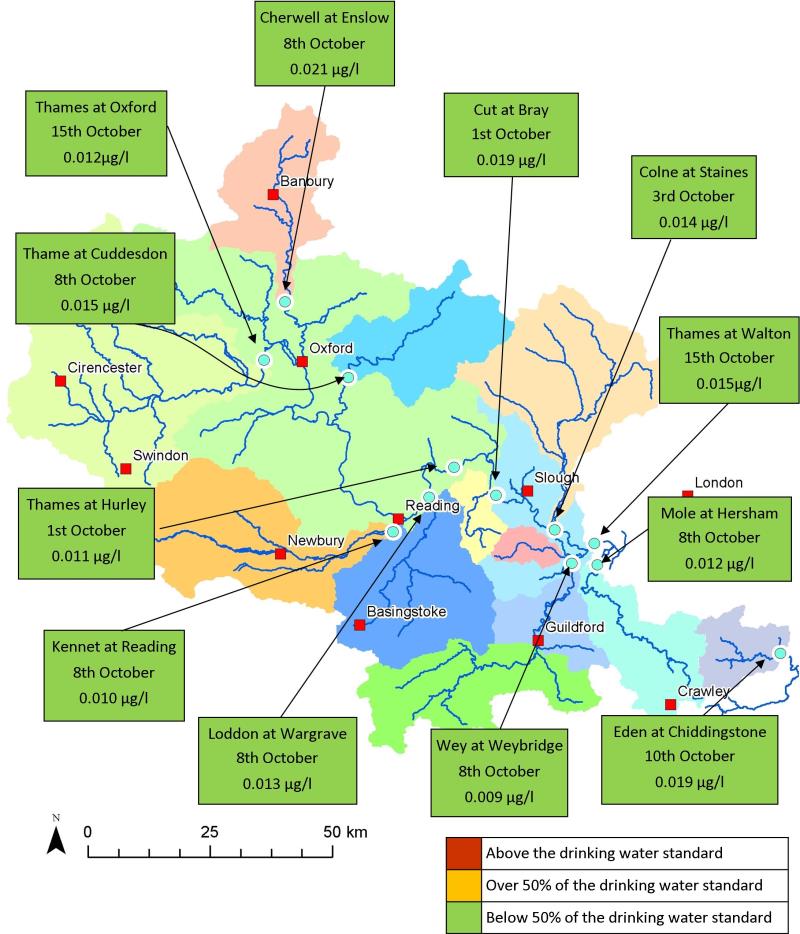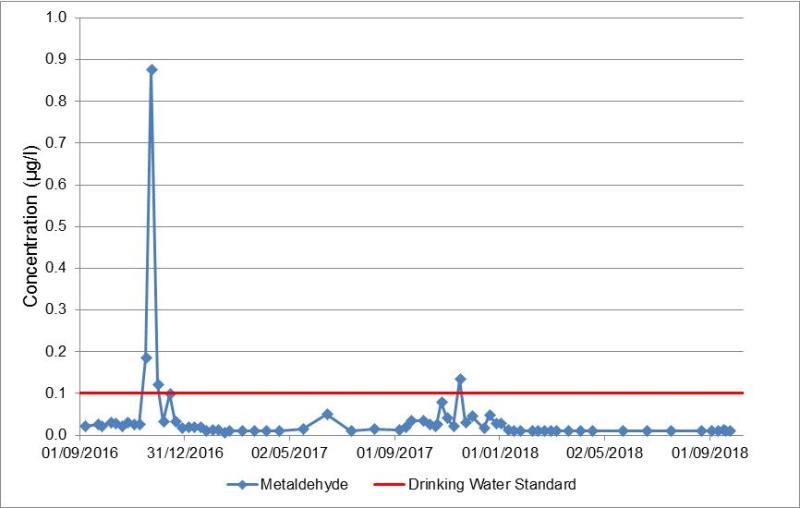Metaldehyde in the catchment
This autumn consider reducing reliance on chemical control measures by adopting a wider range of options in your Integrated Pest Management (IPM) programme to control slug numbers. If you need to use chemical control this autumn, please consider the use of ferric phosphate pellets instead of metaldehyde pellets and, as always, follow best practice guidelines. In some areas there are water company funded initiatives available to support you, so contact your local water company to find out more. Please note that contact details can be found at the bottom of this update.
Please see the map and graph below for monitoring data at 12 locations within the Thames catchment.
Latest Results
Metaldehyde concentrations have remained below the drinking water standard at all 12 sites this week. Soils are now beginning to wet up as rainfall becomes more frequent and temperatures have cooled. Reports from agronomists across the catchment suggest that slug pressure is still relatively low, however we encourage farmers to stay vigilant in the coming weeks as conditions become more favourable for slugs and the risk of heavy rainfall mobilising metaldehyde is likely to increase. Please follow best practice if using any form of chemical slug control this autumn (www.getpelletwise.co.uk).

Focus on….. Thames at Oxford
So far this autumn metaldehyde concentrations at Thames at Oxford have remained below the drinking water standard of 0.1µg/l. During autumn 2016 there were three results recorded above the drinking water standard, one of which was the highest ever concentration detected in the Thames at Oxford at 0.875µg/l. This was following Storm Angus, and was nearly nine times the drinking water standard. The beginning of autumn 2017 was relatively dry across the Thames Basin. Rainfall later in the season mobilised some metaldehyde and concentrations reached a peak of 0.135µg/l on 15th November 2017.

To find out more please contact:
Q2F0Y2htZW50TWFuYWdlbWVudEBhZmZpbml0eXdhdGVyLmNvLnVr, Y2F0Y2htZW50QHNlc3dhdGVyLmNvLnVr, Y2F0Y2htZW50QHNvdXRoZWFzdHdhdGVyLmNvLnVr or Y2F0Y2htZW50Lm1hbmFnZW1lbnRAdGhhbWVzd2F0ZXIuY28udWs=
